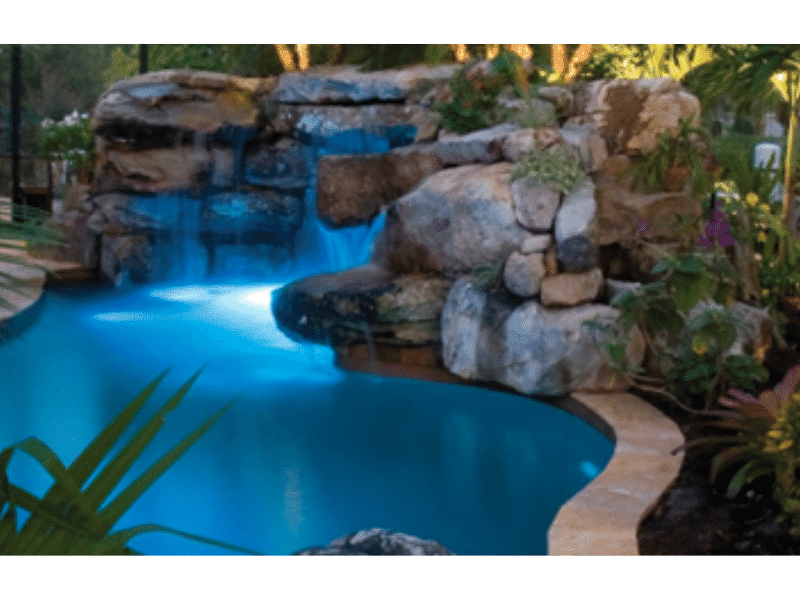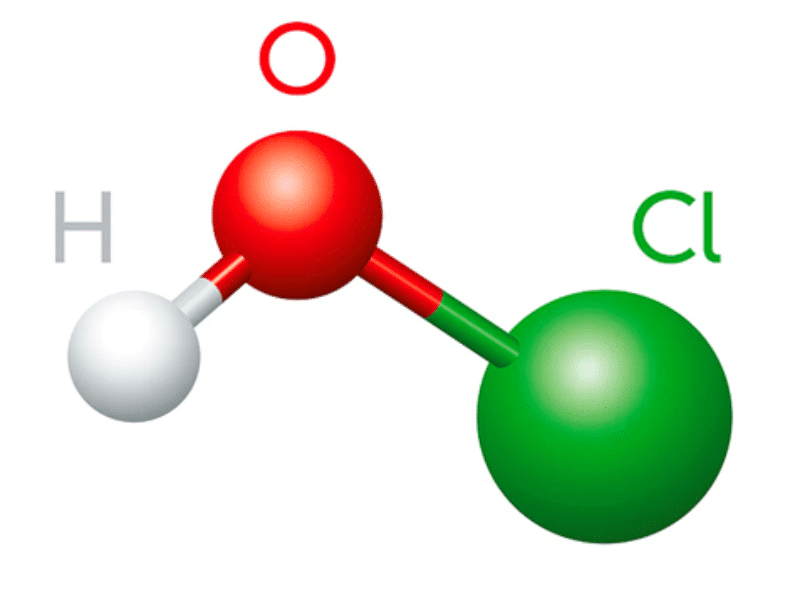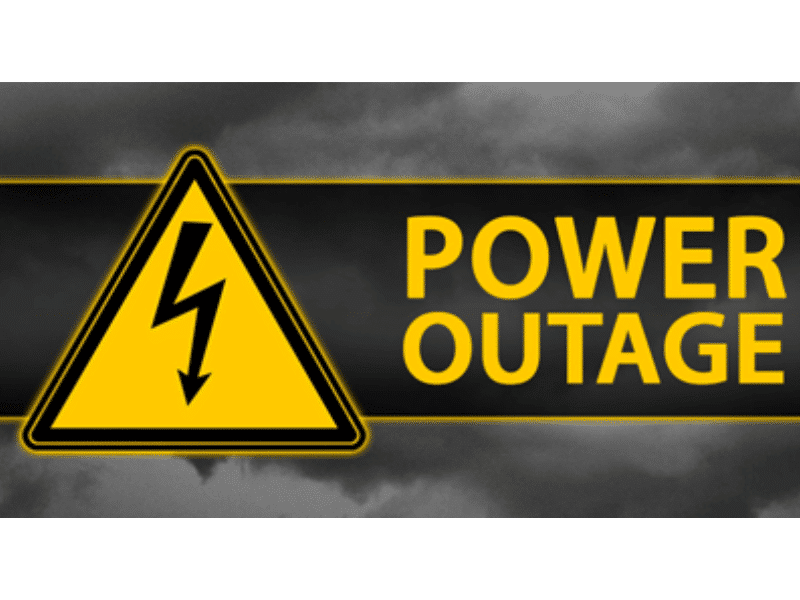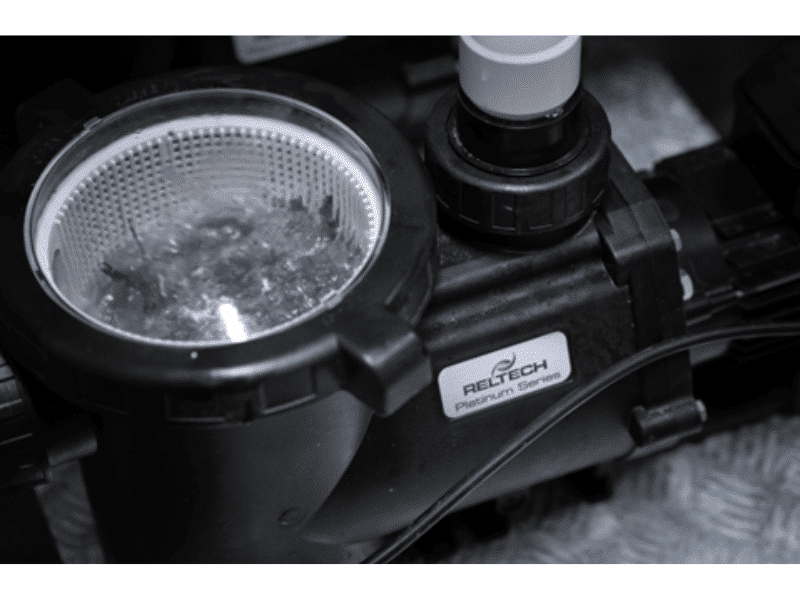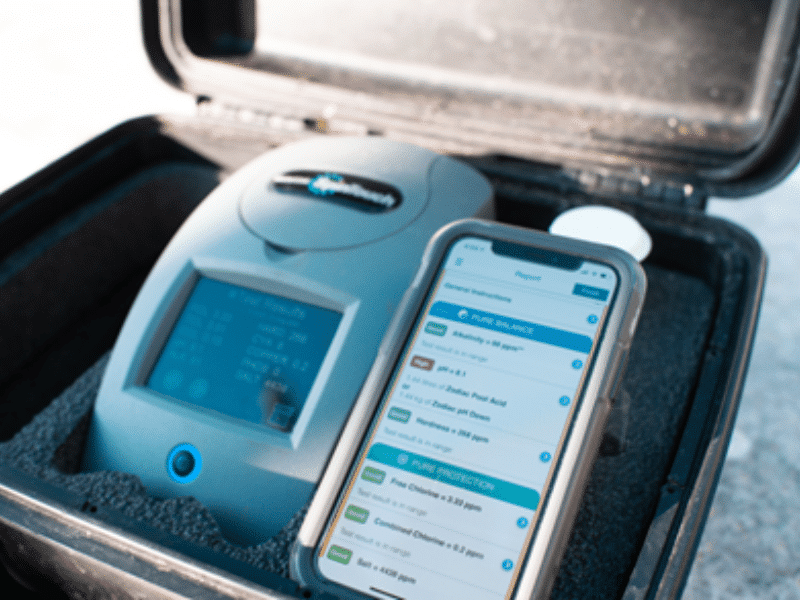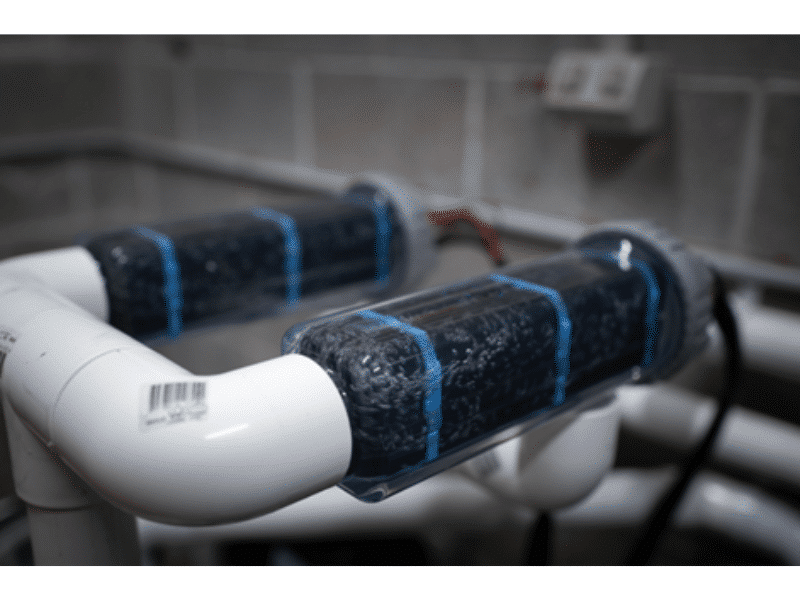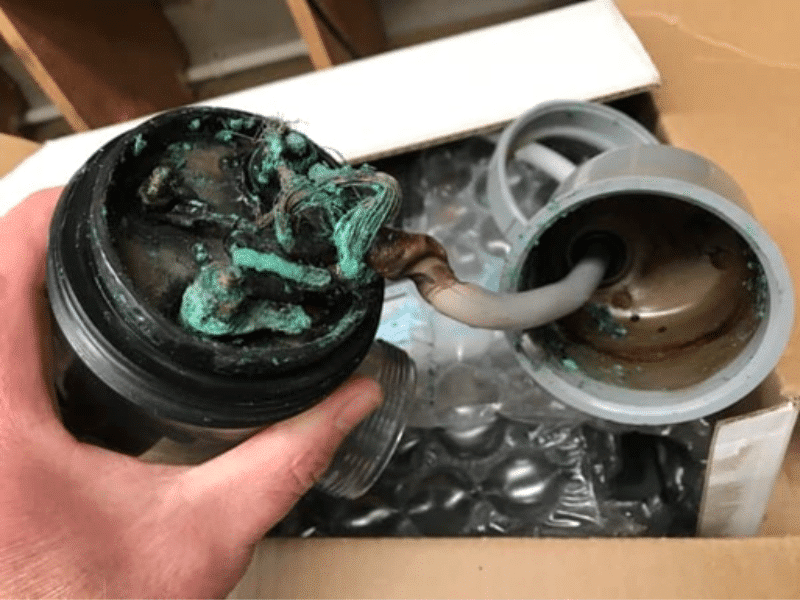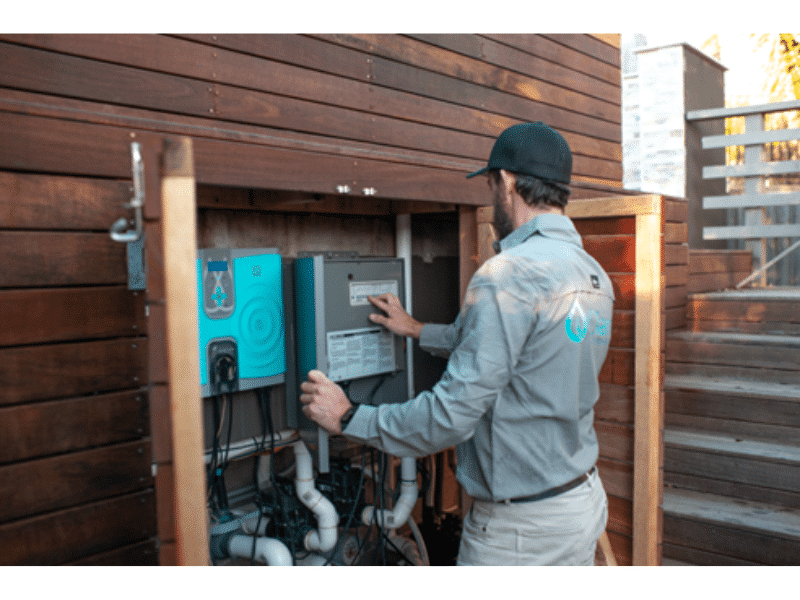In this blog we will be discussing salt and mineral chlorinators (which are essentially one and the same). Before we dive into the basic steps you can follow to determine if your saltwater chlorinator is working as designed we should give you a little bit of background on how chlorinators work.
How do Saltwater Chlorinators Work?
A saltwater chlorinator is a device which is plumbed inline with your pool or spa filtration equipment which is designed to produce Chlorine as the water passes over the salt cell in order to sanitise the pool water.
As the name suggests the pool water must be treated with salt (Sodium Chloride) water at the range recommended by the equipment manufacturer, this is usually somewhere in the region of 4000 parts per million.
While the pool pump and salt chlorinator are switched on a low voltage direct current (DC) is generated by the salt cell, as the water passes over the cell a process called electrolysis takes place triggering a chemical reaction causing the Chloride ions to become oxidised producing Chlorine gas (Cl2).
The Chlorine gas then reacts with the water to form Hypochlorous acid, or Hypochlorite ion depending on the PH of the water, these are the active sanitising agents in the water capable of neutralising bacteria, algae, and other microorganisms at the right concentration.
The byproduct of the above chemical reaction is Sodium Hydroxide which is very Alkaline having a PH of 14.0, which goes part of the way to explaining why your pool water PH is constantly climbing out of the ideal range.
If you’ve read our blog on cloudy pool water you will know that Hypochlorous acid is the stronger of the two sanitising agents and a higher ratio of HCl is produced when your pool water PH is at the lower end of the scale. Hence the importance of maintaining your PH within the recommended range for your pool surface type.
What should I check if I think my pool chlorinator is faulty?
Does The Power Supply Power Up
The first and most obvious thing you want to check is that your chlorinator has power. If there is no power to the unit check that the power cable is plugged in firmly or try an alternate general power outlet. Failing that you should check that the power circuit has not been tripped at your switchboard which could be an indication of an electrical fault or circuit overload.
Check That Your Pool Pump Is Running
Your pool pump will generally be plugged into a power outlet attached to your chlorinator’s power supply, this enables the chlorinator to supply power to the pump during the chlorination cycle. If the pump is not running your best case scenario will be that the power cable has dislodged from the back of the chlorinator, if that is not the case then I suggest you read over our comprehensive pool pump troubleshooting guide here https://claritypoolmanagement.com.au/my-swimming-pool-pump-is-not-working/
Pool Water Chemistry
The next thing you will need to do is have your water chemistry tested by a pool professional to ensure you have an adequate level of salt in the water. If the salt reading is well below the original equipment manufacturer’s recommended range your chlorinator will struggle to produce any Chlorine as it is relying on the Chloride (Salt is made up of Sodium Chloride) to trigger the chemical reaction outlined above.
Visual Inspection Of The Salt Cell
Once you have determined that your pool water has an adequate salt reading you can perform a visual inspection of the salt cell. With the pool pump and chlorinator running, look closely at the salt cell, firstly you want to ensure that water is flowing through the cell and the metal plates are completely submerged.
Next you will need to increase the Chlorine production to its maximum output and monitor the salt cell housing. If you notice a cloudiness in the water at one end of the chamber this is Chlorine production in action and you have nothing to worry about. If this cloudiness is not apparent proceed to check the electrical connections.
Check The Electrical Connections
If there is no Chlorine being produced in the cell the first thing you will want to check is the cable going from the chlorinators power supply to the salt cell, make sure that none of the cables are damaged or frayed, and ensure that they are all firmly plugged in to the correct terminal on the salt cell housing. Also check for corrosion at the terminal point.
After confirming that there is no issue with the above repeat the visual inspection as outlined in the previous step, if you still have no Chlorine production proceed to the physical inspection.
Physical Inspection Of The Salt Cell
Next you will want to remove the cell plates from the plastic housing in order to get an up close look at the condition of the metal plates. To do this you will notice that there is a barrel union at one end of the cell housing which will unscrew in a counterclockwise direction, you will need to undo the barrel union and slide the salt cell out of its housing.
Once you have removed the cell you will want to check the plates for any corrosion, this is commonly seen on the middle plate when a salt cell becomes faulty. Once corrosion sets in it is time to replace the cell, or we sometime recommend replacing the entire Chlorinator depending on the age of the equipment.
While you are inspecting the cell look out for a calcium build up on the plates of the cell which presents as a solid white mass on the metal plates of the cell.
When your salt cell becomes calcified the water has reduced contact with the metal plates. If calcification of the salt cell occurs the electrolysis process described above will be muted resulting in a low Chlorine level in your pool. In order to remove the Calcium buildup you need to soak the cell in a weak acid solution, or a dedicated salt cell cleaner such as Lo-Chlor’s Clean Cell Plus.
If All Else Fails… Contact a Pro!
This covers off all of the basic at home diagnostics to ensure your salt chlorinator is working to its capacity. If you still feel as though there is an issue after conducting all of the above tests then you might want to consider consulting a professional pool service technician. Fill out our contact form and we can arrange a time to inspect your Sydney swimming pool and provide recommendations to get your pool back up and running again.

